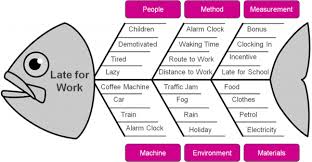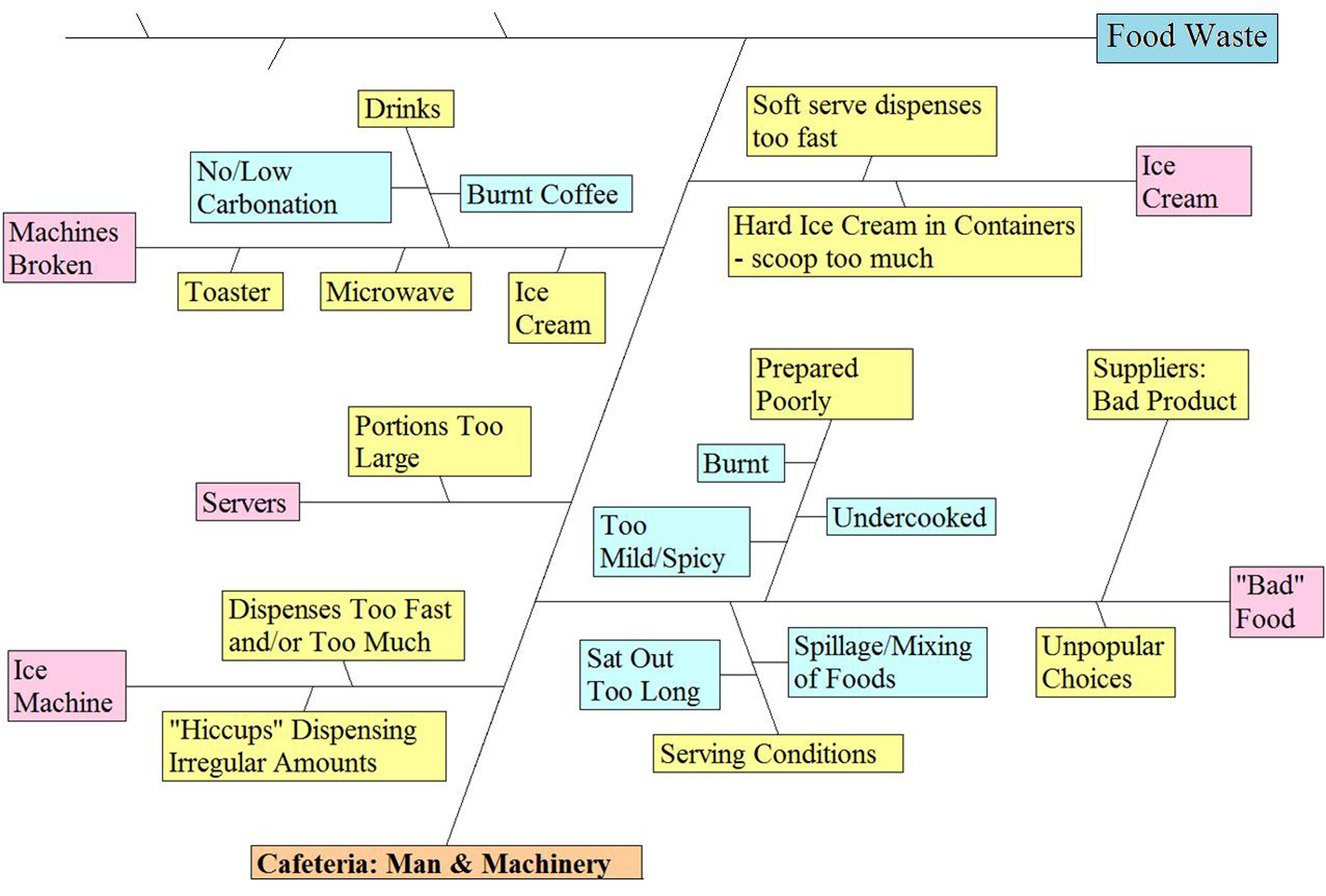

#Ishikawa diagram late food free#
💡 Feel free to imagine your own categories! What matters is that they are adapted to your specific problem: there are no rules. Environment: these are the causes that are external to your company, such as new legislation, changes in the market and more.Measurement: these causes are often improper evaluation of the workload, lack of insight or general visibility due to inefficient KPIs or inaccurate metrics,.Learn about the other 7 Basic Quality Tools at. Material: these causes could be shortages, quality problems with suppliers, or anything that could impact the production process, The Fishbone Diagram, also known as an Ishikawa diagram, identifies possible causes for an effect or problem.Method: this group refers to organizational problems caused by inefficient processes or work methodologies,.Machine: this category is dedicated to technical problems or problems with your tools,.Man: it regroups all kinds of causes linked to your workforce or colleagues (lack of training, motivation…),.It is flexible enough to remain general, yet it allows for a comprehensive approach to most problems. CoursesĮxcerpted from The Quality Toolbox, Second Edition, ASQ Quality Press.This set of categories is probably the most widely used. The authors explore how digitizing one of the seven basic quality tools-the fishbone diagram-using mind mapping can significantly improve the tool. Make one with the Six Sigma package in R.įish(bone) Stories ( Quality Progress) The method behind the fishbone diagram is older than many of its users.
#Ishikawa diagram late food software#
Quality Nugget: Creating Ishikawa (Fishbone) Diagrams With R ( Software Quality Professional) A fishbone diagram connects causal links in major categories with an outcome, or effect. The Quality Toolbox, Second Edition Articles Booksīusiness Process Improvement Toolbox, Second Edition You can also search articles, case studies, and publications for fishbone diagram resources. The resulting diagram illustrates the main causes and subcauses leading to an effect (symptom). Start using the fishbone diagram template and analyze process dispersion with this simple, visual tool.

"Iron tools" can be considered a "Methods" problem when taking samples or a "Manpower" problem with maintenance personnel. "Calibration" shows up under "Methods" as a factor in the analytical procedure, and also under "Measurement" as a cause of lab error. Note that some ideas appear in two different places. Layers of branches show thorough thinking about the causes of the problem.įor example, under the heading "Machines," the idea "materials of construction" shows four kinds of equipment and then several specific machine numbers. The team used the six generic headings to prompt ideas. This fishbone diagram was drawn by a manufacturing team to try to understand the source of periodic iron contamination. It is known as the Fishbone Diagram because of its resemblance to a Fishbone.

When the group runs out of ideas, focus attention to places on the chart where ideas are few. The Ishikawa Fishbone is a Cause-Effect Diagram that helps to find the Root causes of any type of Problem.We cannot claim that there are different kinds of Ishikawa diagrams there is only one sort of Ishikawa diagram. Layers of branches indicate causal relationships. The shape of the diagram allows you to classify the causes in different ways, as we will see in the types of cause-effect diagrams, thus avoiding making mistakes by focusing on a single type of problem. Continue to ask "Why?" and generate deeper levels of causes. Write sub-causes branching off the causes. Write the causes on sticky notes when brainstorming and go around the team asking each individual for one cause. Leave plenty of space between major categories so you can add detailed causes afterward. Again ask "Why does this happen?" about each cause. Use the Ishikawa diagram to help the team stay focused on the causes of the effect and not its symptoms.Causes can be written in several places if they relate to several categories. Ask "Why does this happen?" As each idea is given, the facilitator writes it as a branch from the appropriate category. Brainstorm all the possible causes of the problem.Write the categories of causes as branches from the main arrow.If this is difficult use generic headings: Brainstorm the major categories of causes of the problem.Draw a box around it and draw a horizontal arrow running to it. Write it at the center right of the flipchart or whiteboard. Agree on a problem statement (effect). The fishbone diagram or Ishikawa diagram is a cause-and-effect diagram that helps people track down the reasons for problems, impediments, imperfections.Materials needed: marking pens and flipchart or whiteboard.


 0 kommentar(er)
0 kommentar(er)
